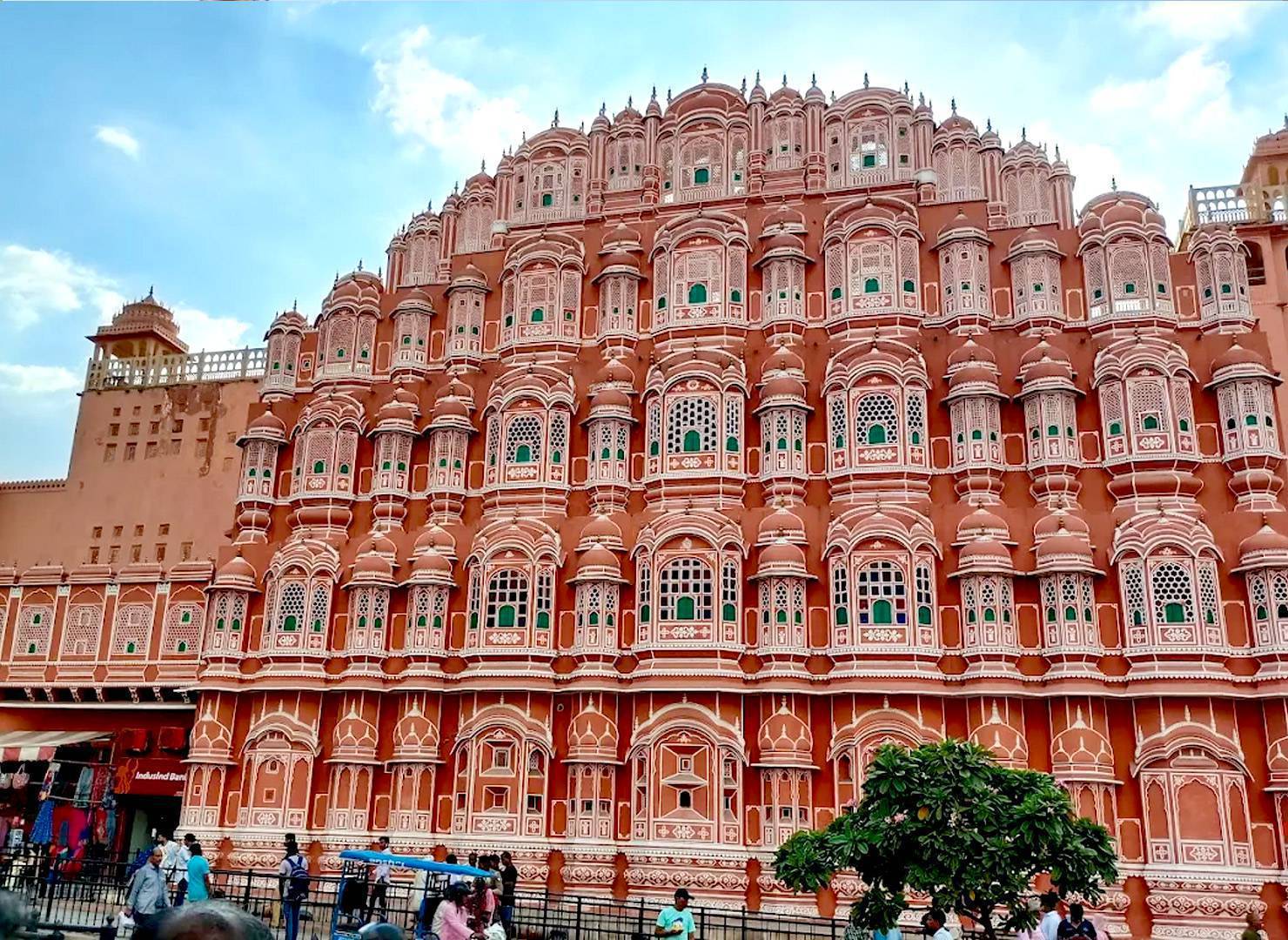Jaipur, the capital of Rajasthan and affectionately known as the "Pink City," is celebrated not only for its sweeping forts, vibrant bazaars, and regal legacy, but also for a food culture that is as colorful and layered as its architecture. The gastronomy of Jaipur is a dialogue between Rajasthani tradition, the demands of a harsh climate, and the ceremonial eloquence of the erstwhile courts.
This blog explores Jaipur's delectable cuisine, the flavors that make it unique, and why the city's culinary offerings are so popular among locals and visitors from around the world.
Why Jaipur Food is Truly Special
Jaipur's food culture has its origins in the Royal Kitchens of the Maharajas. The Rajput rulers liked to throw big feasts and had refined tastes, which led to many of the dishes we eat now. The royal cooks called "Khansamas" were skilled artisans who made complex dishes with local ingredients while blending in flavors from Mughal, Gujarati, and Punjabi cooking.
What sets Jaipur's food apart is how it grew out of the tough desert setting. The lack of water and fresh veggies pushed cooks to come up with new ways to cook and to use a lot of dairy products, dried foods, and ways to keep food fresh. This need sparked creativity, resulting in tastes that are strong, full-bodied, and hit the spot.
The Heart of Rajasthani Flavors
Jaipur's food packs a punch with its bold and strong tastes. The dishes here don't hold back – each one is a flavor fest that wakes up your taste buds. The generous dollops of ghee, fragrant spices, and old-school cooking techniques create a taste explosion that's pure Rajasthani.
The weather and landscape of Rajasthan have shaped Jaipur's food in a big way. The scorching heat and dry conditions meant food had to last longer, which led to meals heavy on oil and spices – these not only keep food fresh but also crank up the flavor.
Must-try dishes that will blow your mind!
Below are the emblematic recipes that command a Jaipur table, the contours of their flavor, and the underlying reasons for their passionate embrace.
Dal Baati Churma: The King of Rajasthani Cuisine
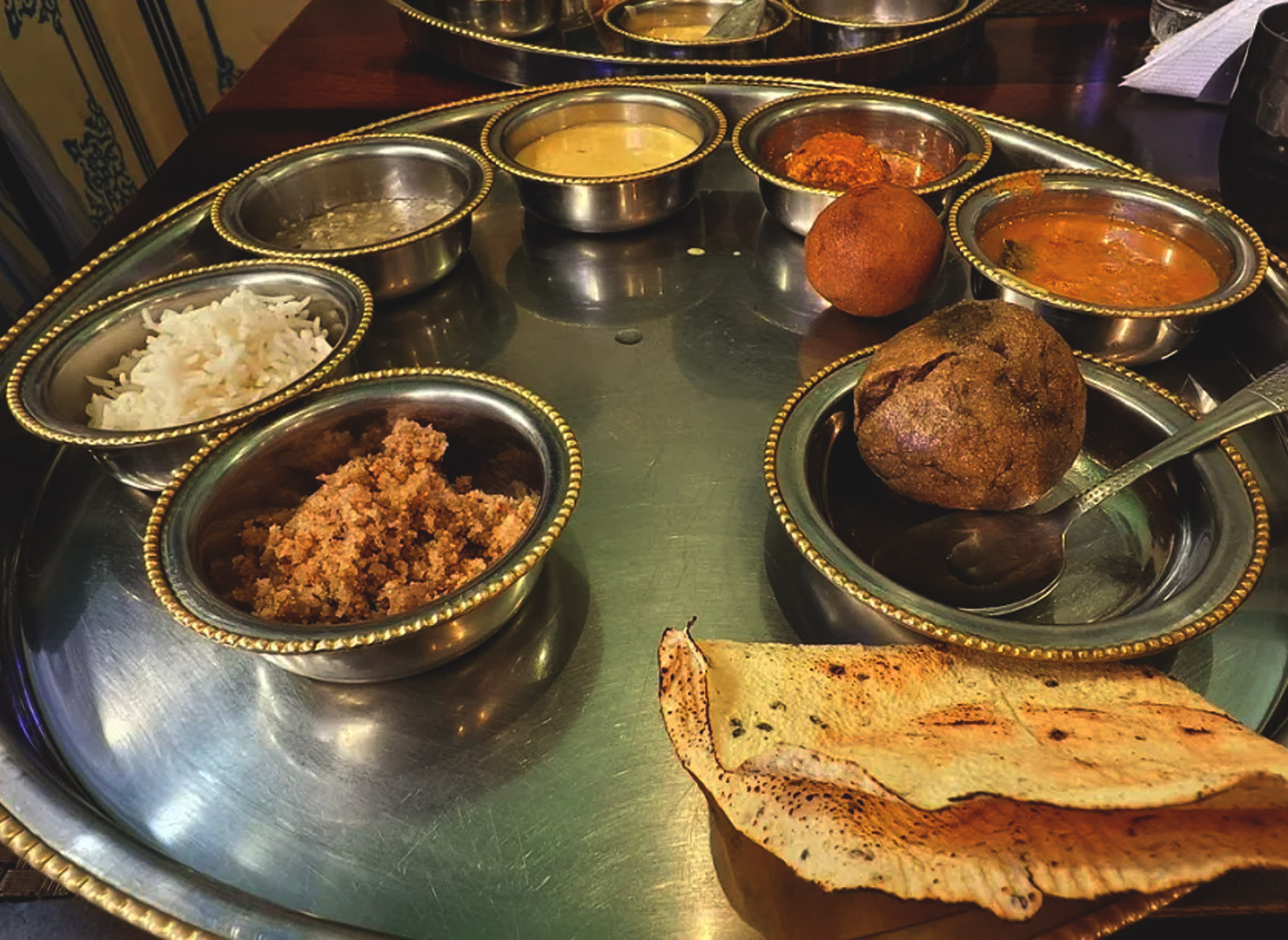
To traverse Jaipur’s culinary landscape without pausing for Dal Baati Churma would be to leave the city’s spirit unacknowledged. This triad of bread, lentils, and sweet can be read as the edible signature of an entire region, marrying fire, earth, and the slow alchemy of spice.
The baati, small balls of coarse flour, are traditionally cooked in a clay tandoor or, for authenticity’s sake, over a cow-dung fire. The method lends them a faint, welcome smokiness. The crust becomes the color of sunset, brittle and inviting, while the inside stays warm and tender. You crack one open and flood the cavity with a small river of ghee.
Alongside, you’ll find the dal: a medley of five lentils, simmered, then spiked with cumin, coriander, a whisper of red chili, and a gentle dusting of hing. The taste is deep and earthy, the warmth of the spice never overwhelming the lentils’ nutty base. The harmony with the baati is intuitive, a perfect duet.
Finally, churma completes the trio. Coarse flour is roasted in ghee and then sweetened with jaggery, turning into golden crumbs that melt on the tongue. Its gentle sweetness is the polite bow that finishes the savory aria, leaving you and the meal in perfect balance.
Pro Tips - Don’t count calories when eating this - just enjoy every spoonful!
Laal Maas: The Fiery Royal Curry
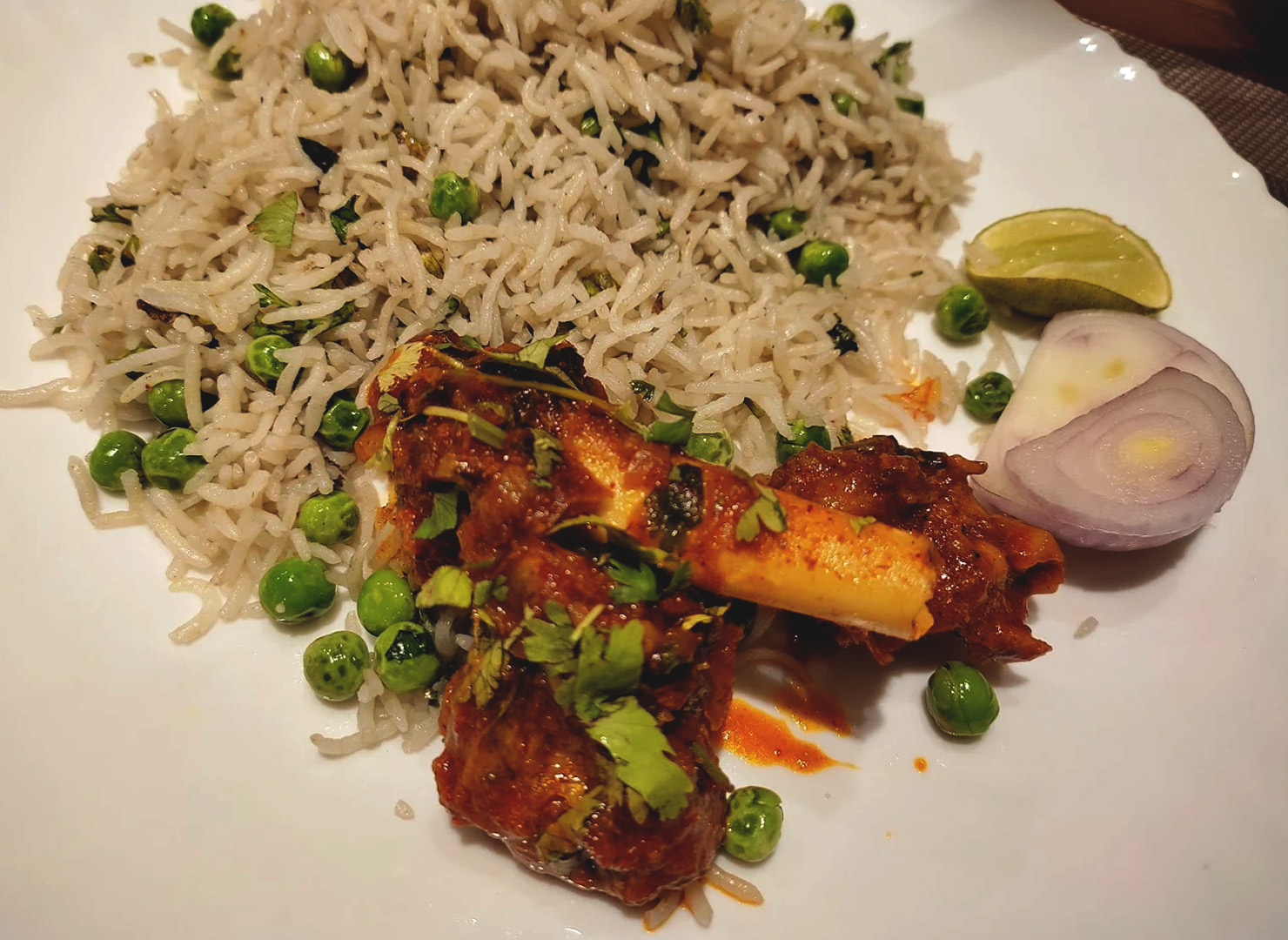
Laal Maas is Jaipur’s tribute to the ardent devotee of heat and spice. This vivid crimson curry, customarily fashioned with mutton, derives its blazing hue and fervor from the Mathania red chilies, a storied cultivar cultivated in the arid soils surrounding Jodhpur. The dish carries the imprint of royal kitchens, where it was first conjured for the Rajput horsemen who, it was said, desired a repast as spirited as their sabres.
The meat is submerged in a viscous sauce composed of yogurt, onions, garlic, and a spice mélange in which the chilies reign. The palate is first seized by the burn, yet the pain is swiftly escorted by a symphony of secondary notes: sweet caramel from the onions, the cooling of the curd, and the warm murmurs of cumin and cardamom. This stratification of flavor is revealed gradually, a measured unfolding with each chew.
The dish’s distinction rests on more than mere heat; it is the length of its labour and the nobility of its ingredients that confer dignity. The mutton, stewing for hours, and the hand-pound spices form a depth that cannot be hurried. In Laal Maas, the Rajasthani creed—that a meal must linger in the memory like a scarlet sunset—finds its most ardent expression.
Gatte ki Sabzi: Vegetarian Innovation at Its Best
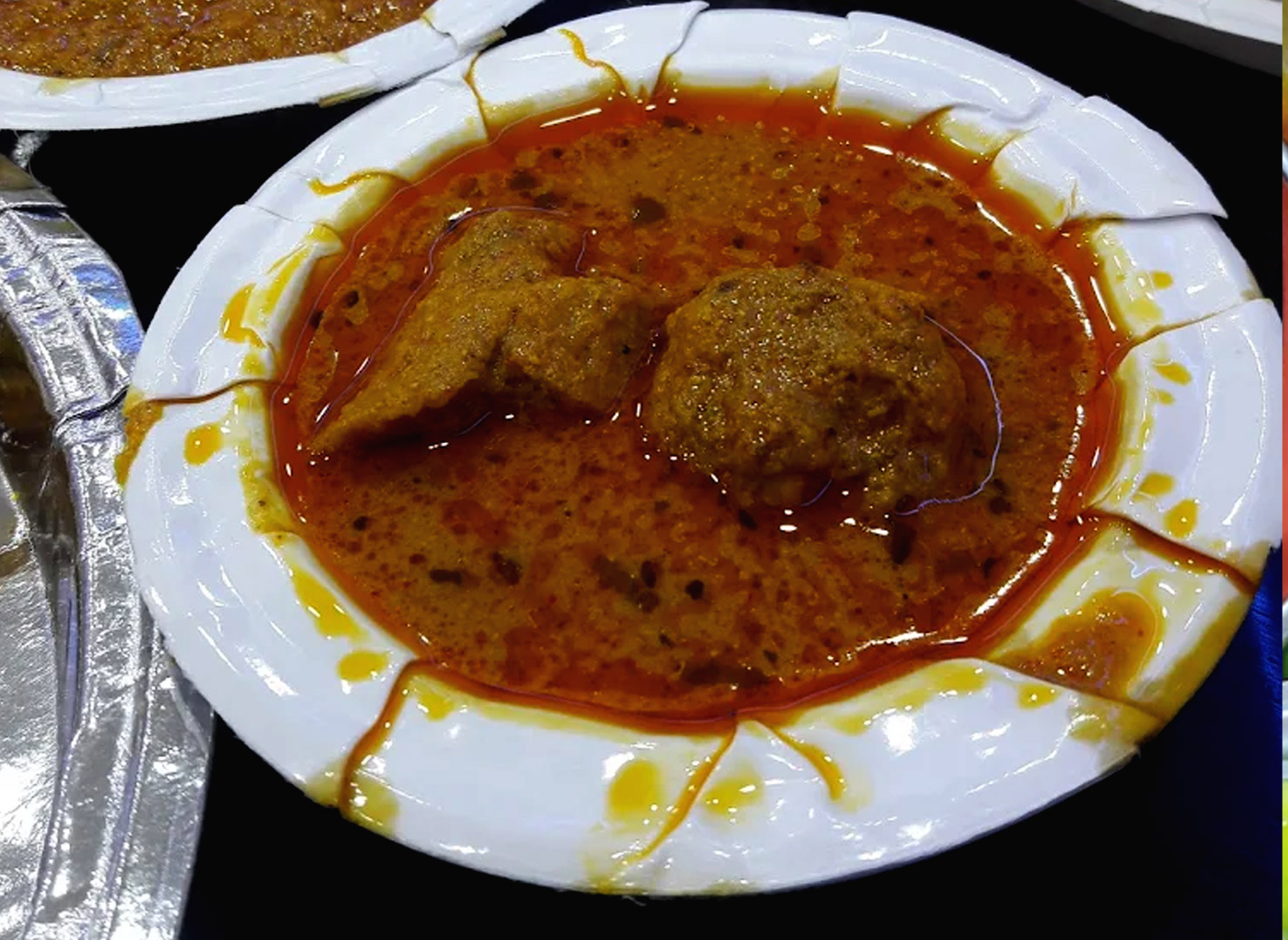
Who said vegetarian food is boring? This dish proves them wrong!
Gatte ki Sabzi stands as a testament to the imaginative resourcefulness characterizing Rajasthani vegetarian gastronomy. In a region where access to fresh produce was often limited, the local population turned to gram flour, or besan, as a staple that could be transformed into a nourishing and texturally rewarding foundation for a multitude of preparations.
The dish centers on gatte, small, cylindrical dumplings fashioned from a simple dough of gram flour, and imbued with the precise and judicious use of spices: robust carom seeds, a touch of red chili powder, and a whisper of turmeric. After steaming or boiling, the gatte are luxuriously bathed in a sauce based on well-whipped yogurt, brightened with sautéed onions and tomatoes, and layered with the characteristic spices of the region.
This culinary pairing yields a striking and memorable palate impression: the gatte presents a pleasantly resilient and slightly chewy mouthfeel, releasing a toasted, nutty fragrance inherent to the gram, while the sauce contributes a lively, sour note that contrasts with the foundation. The dish, in sum, behaves as a gratifying and immoderately flavorful repast, quietly declaring that vegetarian cooking may, with the right balance of ingenuity and technique, rival the interest normally ascribed to meat-based options.
Ker Sangri: Hidden Desert Bonus
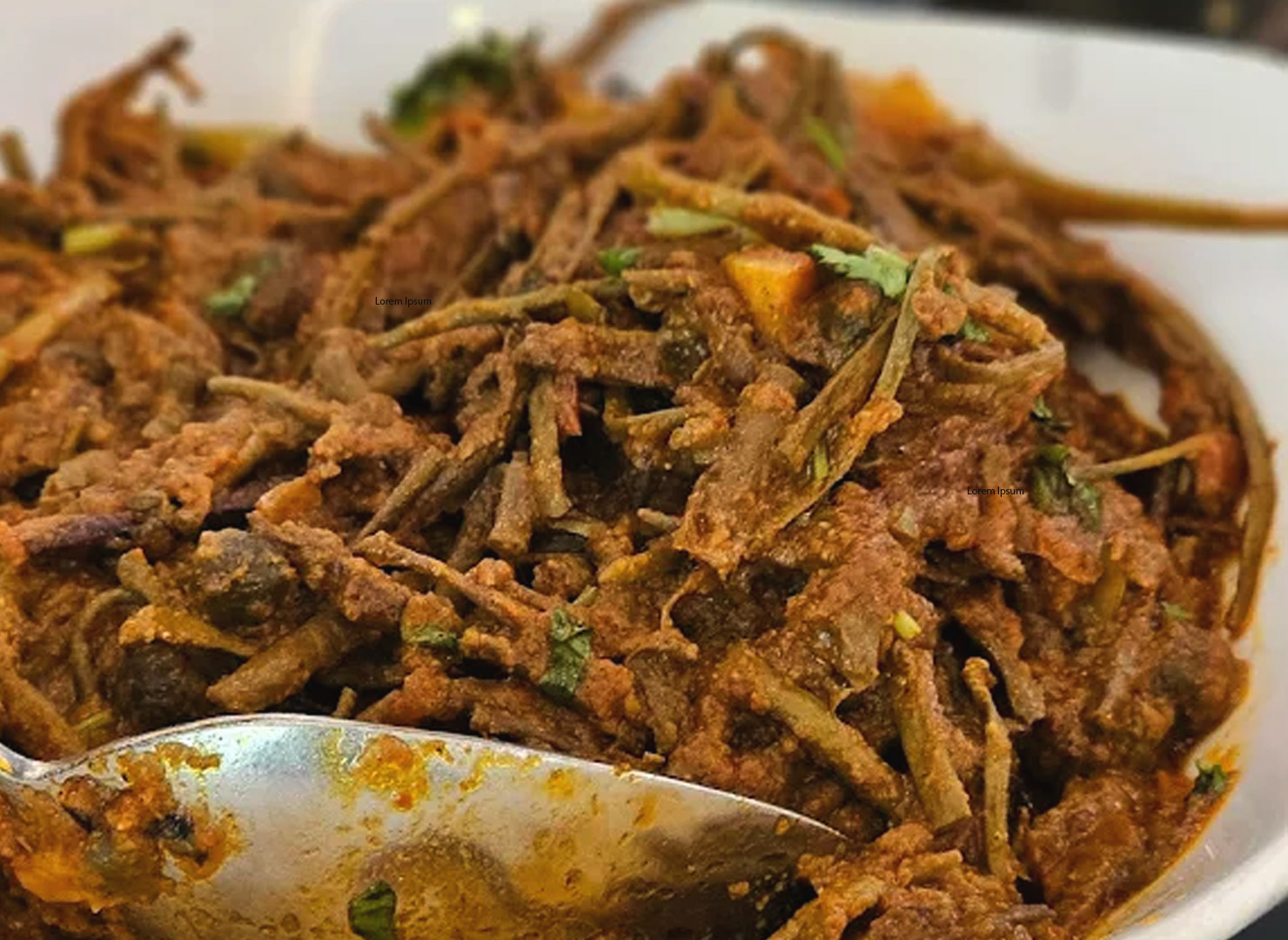
In the archives of Jaipur’s edible heritage, Ker Sangri stands alone. The dish centers on ker—small, bright-red desert berries—and sangri, elongated seed pods of a desert legume, both of which are sun-dried for seasonal preservation.
These larder items are briefly rehydrated and simmered with a dry spice inventory that might include amchur, red chili, and turmeric. The result is a palate that oscillates between bright acidity, faint bitterness, and a complex, lingering umami. The balance is so compelling that even the trained palate is likely to return for another morsel, elevating what might be viewed merely as resourceful foraging into a form of desert alchemy.
The dish’s texture captivates: ker contributes quick, piquant accents, while sangri lends a substantial, chewy contrast. Prepared with scant water and a generous oil bath, the seasoning condenses, resulting in a preparation that retains its concentrated flavor and remains stable for several days without refrigeration.
Street Food Culture: The Heartbeat of Jaipur
The street food culture of Jaipur constitutes a vibrant tapestry of bites and brews that mingle price and pleasure with rare economy and daring taste. Vendors animate the boulevards by twilight, erecting their flaming makeshift kitchens where the clang of spatulas, the hiss of hot oil, and clouds of smoky spices compose a nightly symphony.
Pyaaz Kachori: The Perfect Snack
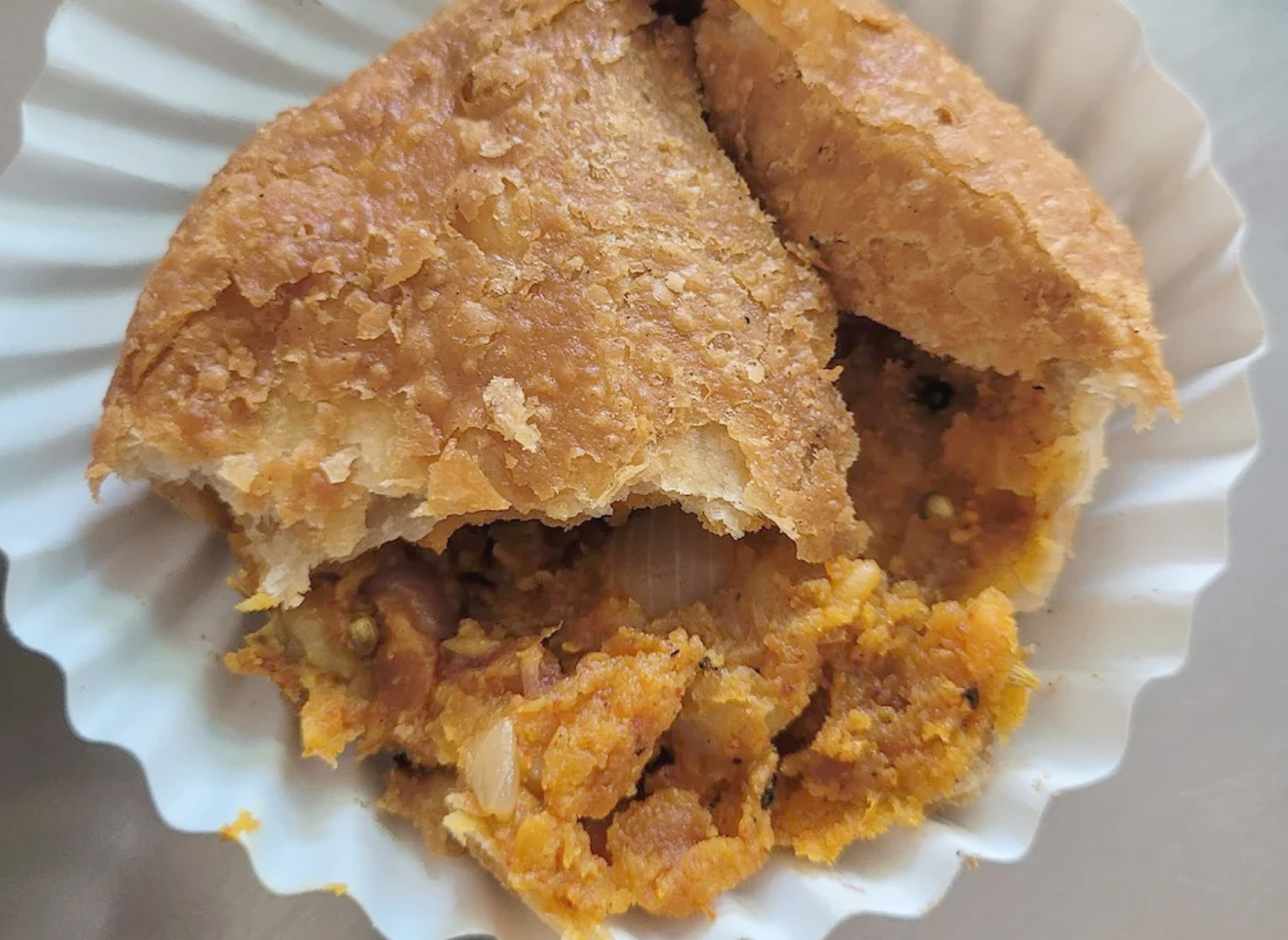
The crown of Jaipur’s edible heritage is the kachori. These round, lipid-glossed moons of fried dough, mottled and mottled again with bubbling oil, conceal a nucleus of spiced treasure. The Pyaaz Kachori reigns supreme: a small, audacious swirl of fried onion that pleads, teases, and finally explodes with a vinegar-tinged, peppery insistence. The crust is rough yet courteous, yielding a hot, fragrant avalanche of finely chopped onion, carom seed, and a whisper of jaggery. Tamarind syrupic in its tightness, green coriander chutney furious in its sting, escort the kachori on its journey, harmonizing crunchy, juicy, sharp, and sweet.
Mirchi Bada: Spice with a Surprise
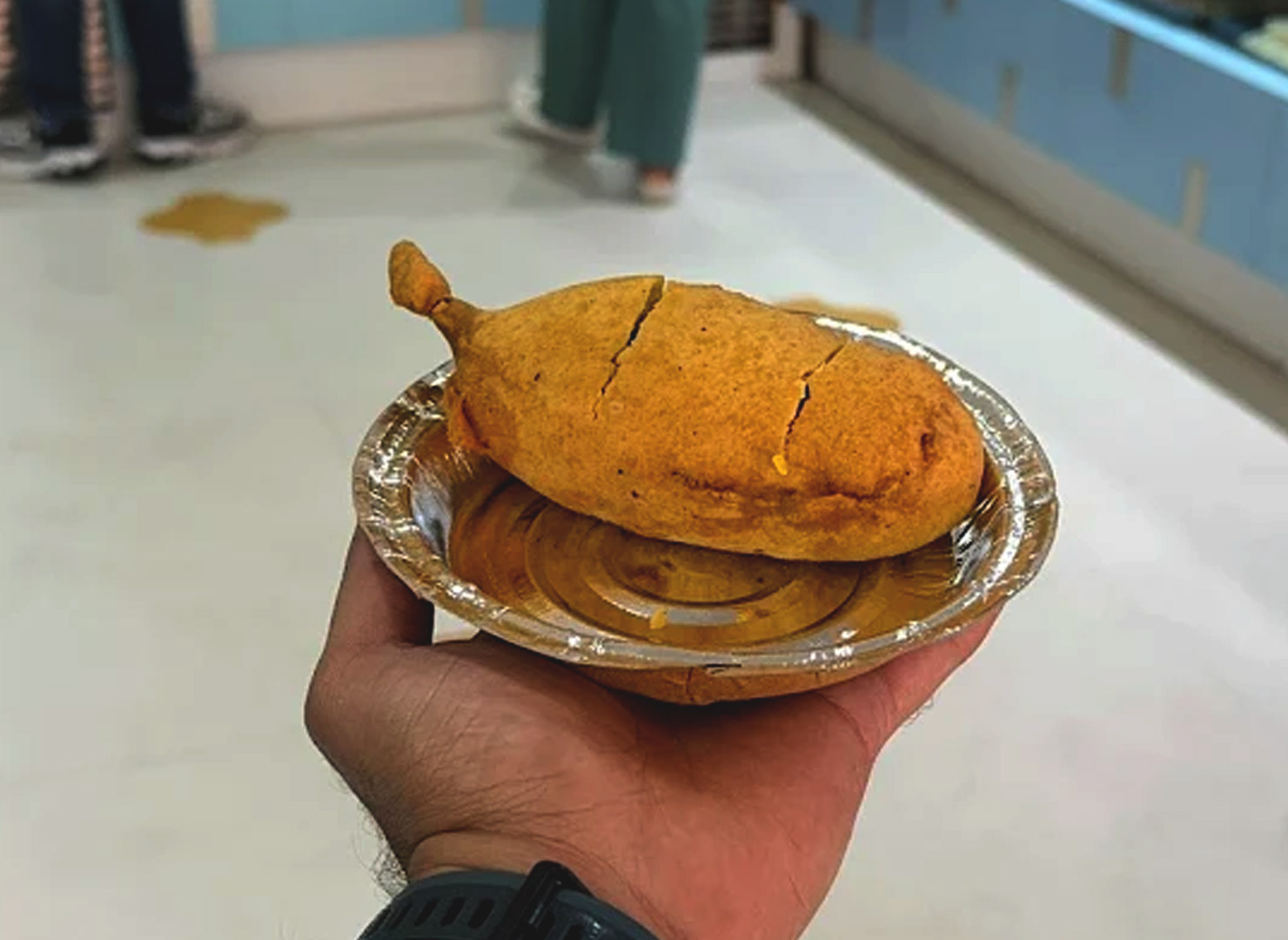
Mirchi Bada confounds and delights. The green chili, a renegade writ large, is split, eviscerated of its seed-pearls, and reborn: its cavity stuffed with a mashed potato militia that carries cumin, coriander, and a clandestine shot of the spice-mustard civil war. A robe of gram-flour batter, tinged with turmeric, is then buttoned over, and the whole is sunk in reeking oil until its armor is burnished and the potato regiment inside steams in furious silence. The first bite is a small insurrection: the chili’s sharpness bites back, the potato responds in a buttery flood, and the batter dissipates into a cloud of oil and heat.
The first bite of a piping-hot aloo tikki is a small thermal odyssey: the exterior is a crisp shell, faintly sour, that parts to reveal a steaming cloud of spiced potato. A whisper of chilies, calibrated to your personal heat dial, brightens the starchy inner layer. Served beside a small riot of chutneys, the interplay of crunch, steam, and that calibrated fire is, at least for me, a singular magnet for the senses.
Ghewar: The Jewel that Glows at Dusk
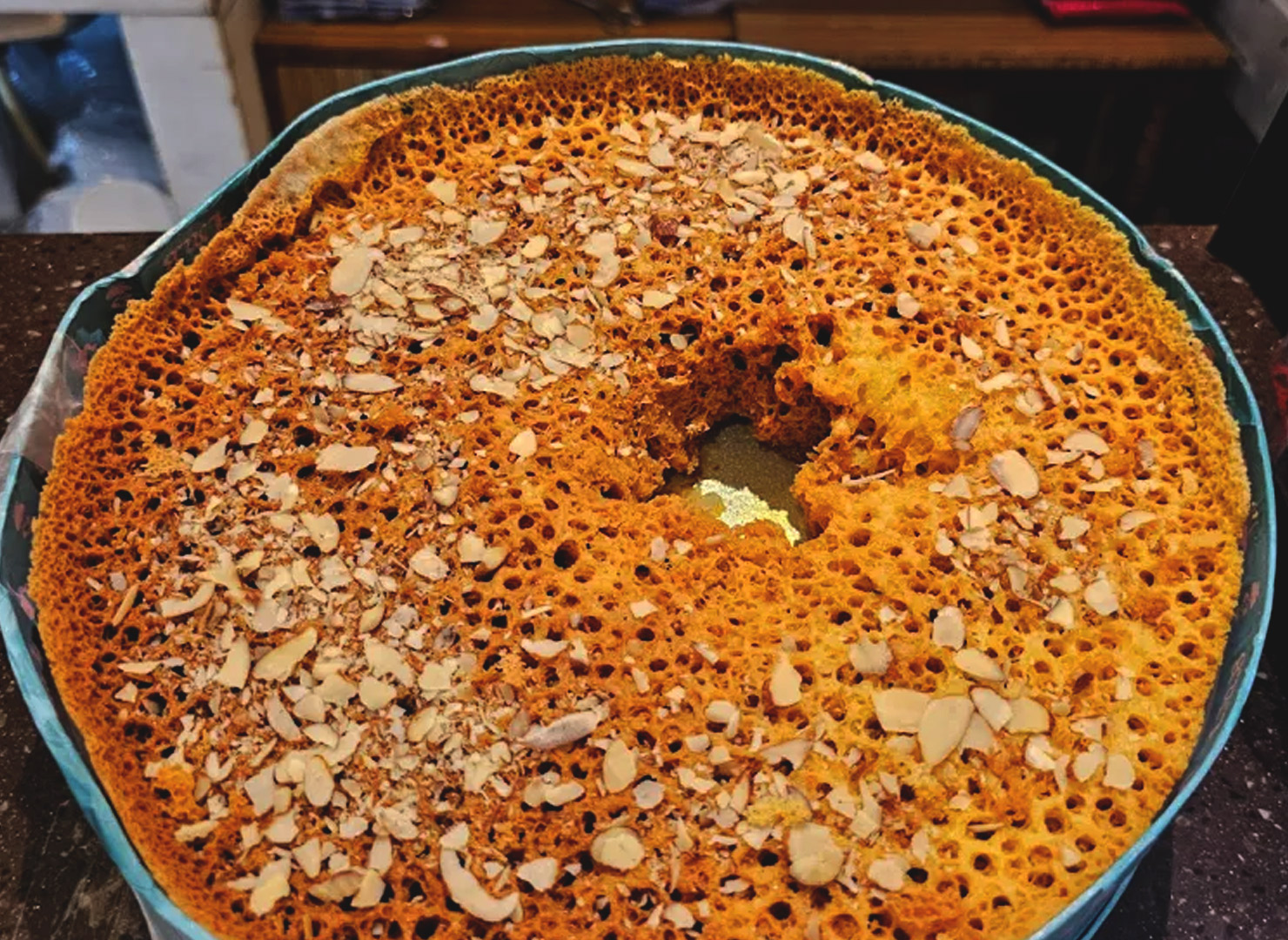
In the court of Jaipur’s sweets, ghewar is the singular, glimmering heir. The disc, delicate as a spider’s vow, is hatched from flour and coaxed into the hush of hot ghee, the batter threading itself into a porous, honeyed sea.
At the level of the disc, the texture is crystalline and evaporative, a passport for monsoon air. Yet the true alchemy arrives at the finish: a soak in syrup, a shower of rabri, a scatter of perfumed nuts, and, for the courtly few, a whisper of silver. The result is an interior cool, a thick sweet milk, and a brittle, airy floor, all of which conspire to turn jaw and palate into a small, ecstatic country.
The Art of Beverages: Cooling the Desert Heat
The sun above Jaipur behaves, each day, as if it were a single furnace. In response, the city has forged a small militia of beverages, each one a tactical retreat for the tongue and a gentle re-ordering of the stomach.
Lassi: More Than Just a Drink
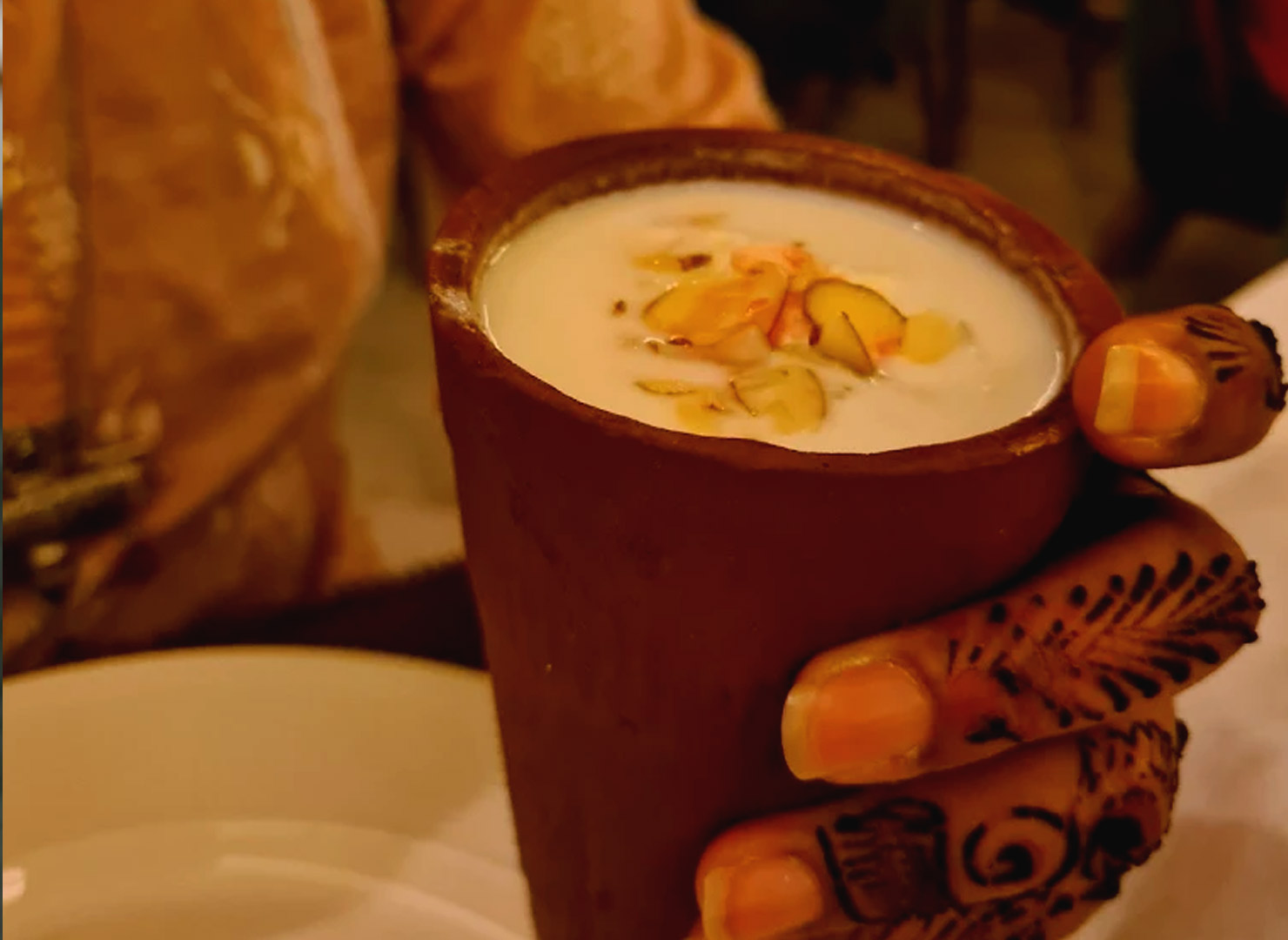
The lassi culture of Jaipur is cultural folklore incarnate. Crafted using freshly churned yogurt, these beverages span a spectrum from unadorned sweet or savory incarnations to ornate presentations crowned with malai, slivered almonds, pistachios, and petals of rose.
Lassi aficionados in Jaipur revere Makhaniya Lassi most, a concoction so unctuous it hovers between drink and dessert. The base yogurt is churned until velvety, then layered with a solid dome of malai, and finished with a sprinkle of emerald pistachios and ruby rose petals. The palate encounters a lavish interplay of yogurt’s gentle tang, the syrupy kiss of sugar, and the velvety fulness of cream, rendering each sip simultaneously arresting and soothing.
Masala Chai: The Universal Comforter

Masala chai is a national ritual, yet the brew to be found in Jaipur boasts a distinctive profile. Water is boiled with generous fistfuls of black tea, to which milk and a liberal dose of crushed cardamom, fresh ginger, and occasional dustings of cinnamon and clove are added along with sugar to the boil.
The resulting infusion is both bolder and more piquant than its counterparts in northern, central, or southern India. Its sweet, dusky heat unfurls in the throat and stomach, imparting a gentle internal glow that paradoxically cools the desert air. A cup of this chai between bites of fiery kachoris or pani puri is more than gastronomic pairing; it is brief communion with the local climate and its people.
Regional Specialties and Hidden Gems
Mawa Kachori: A Sweet Surprise
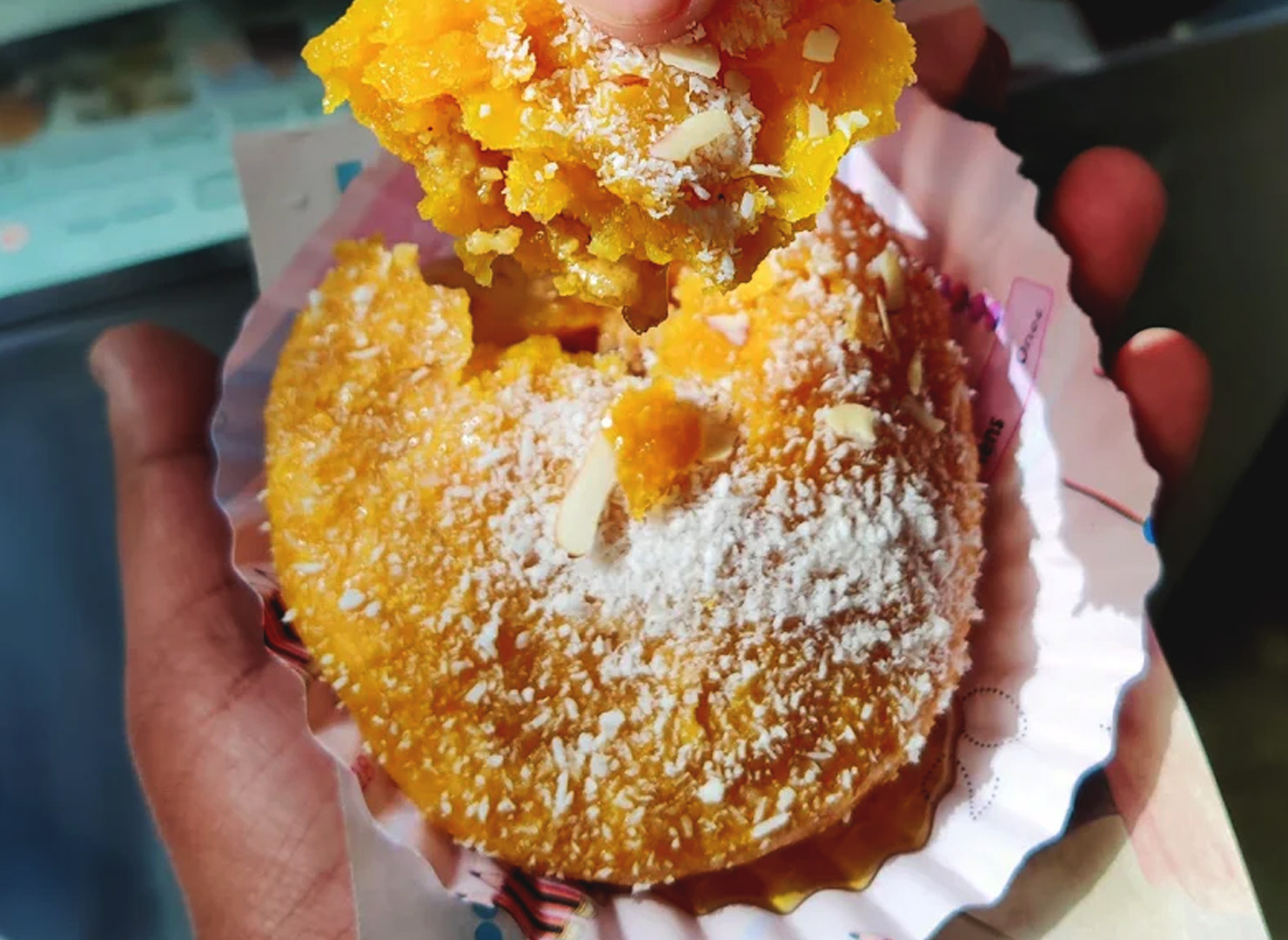
While kachoris typically occupy the savory domain, the streets of Jaipur present the intriguing Mawa Kachori, a confection conceived to delight the palate in a different register. Each orb is prised open to reveal a heart of khoya, coarsely ground milk solids merged with slivers of pistachio and a whisper of cardamom. After a meticulous fry, the kachori rests in a warm bath of sugar syrup and is often crowned with a scatter of chopped emerald nuts.
The inaugural crack of the shell yields a juxtaposition both charming and complex: the brittle, globe-encircling veneer gives way to a moist, syrupy center. The khoya envelops the tongue in a milky, almost buttery hush, the pistachio counters with its own woodsy crunch, and the cardamom breathes forth a lingering, aromatic warmth. The confection inhabits that rare space in the culinary world where snack and dessert coalesce, inviting one more, and then one more again.
Raj Kachori: The King of Chaats
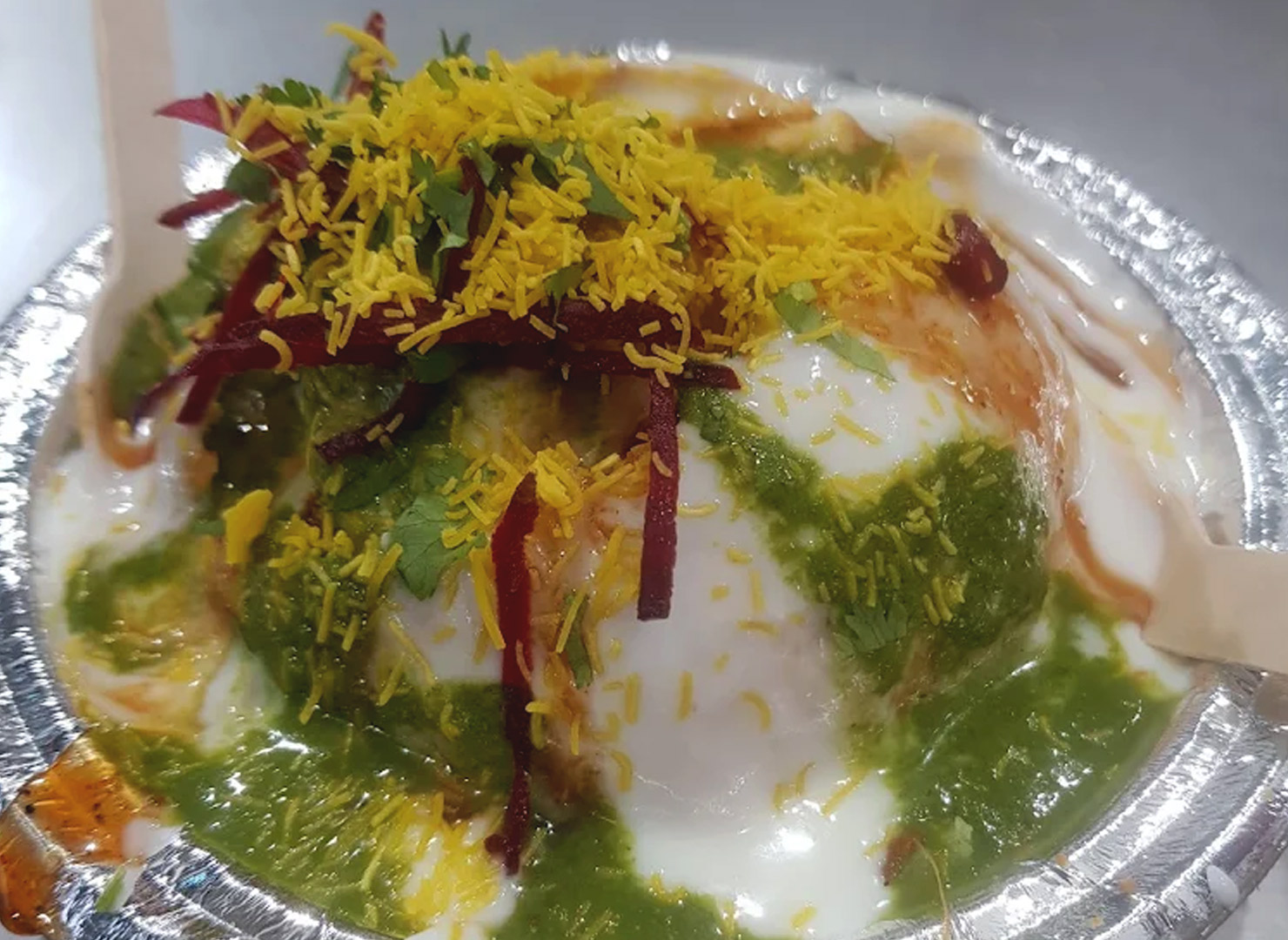
Raj Kachori commands attention as both canvas and crowning achievement of the chaat genre. Fashioned into a substantial, cavernous dome, the kachori becomes a vessel of layered indulgence. Boiled potato, sprouted pulses, and a generous shower of crisp sev nestle within, while rivers of tamarind, mint, and date chutneys braid through the filling. A repose of yogurt completes the tableau.
The experience is a choreography of sensations. The kachori’s brittle shell first yields a satisfying crunch, quickly succeeded by the creaminess of the yogurt. The sev crackles and the chutneys detonate in contrasting bursts of sweet, tangy, and spicy. A forkful may confer starchy heft from the potato, the verdant snap of sprouts, and the concentrated tang of tamarind—all in one forkful. Conceived as a snack, it masquerades comfortably as a compact, vivid meal.
Balushahi: The Royal Sweet
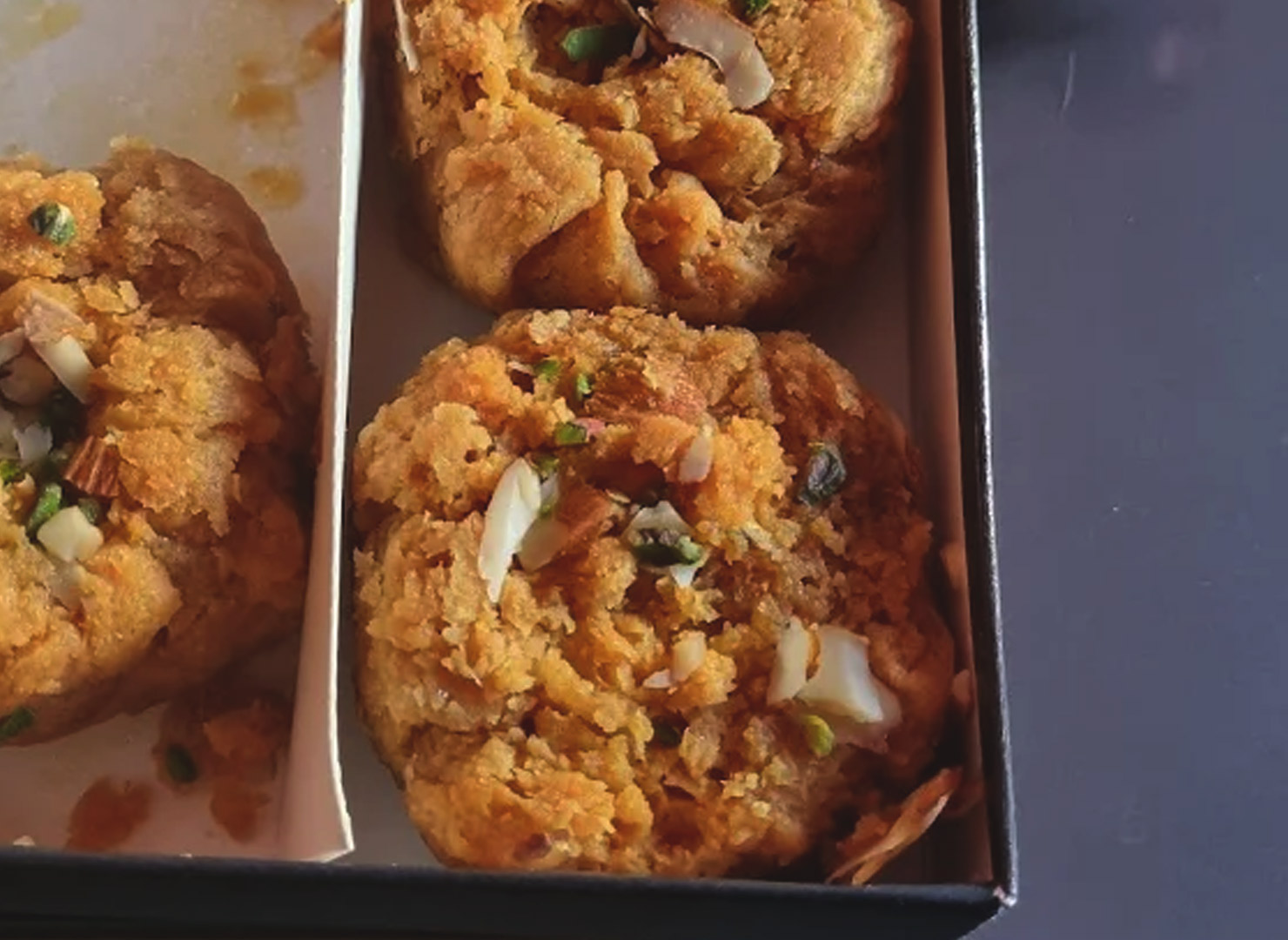
Balushahi occupies its regal orbit in the kingdom of Indian desserts. At a glance, it resembles the internationally familiar ring of a doughnut, yet the gustatory experience is entirely singular. The dough, a simple alliance of refined flour, ghee, and a whisper of yogurt, is coaxed into a surrendering opacity, then submerged in hot oil until the surface turns a lacquered gold. Once cooled, each ring is permitted a bracing soak in sugar syrup.
The result is a paradox of crisp and tender: the ignition crack of the outer shell yields to a feather-light, almost cloudy crumb that dissolves into a buttery, almost tangy sweetness. The syrup clings without drowning, and each iteration of the bite summons the ghost of the frying ghee, a gentle reminder of the craft and economy that gave the sweet its lineage. Balushahi remains both a palatial indulgence and a pocket-sized trophy of everyday celebration.
The dessert shatters lightly under the fork, each layer peeling away like a delicate shell; the liquid jaggery soaking the strands bestows both gloss and a quiet, lingering sweetness. The ghee, generous and golden, envelops the bite, imparting a velvety richness that feels at once celebratory and intimate, the kind of luxury once reserved for the palaces of Rajasthan.
The Spice Story: Understanding Jaipur's Flavor Profile
The bold application of spices defines The Culinary Identity of Jaipur. Both whole and ground seasonings are employed liberally, their saturation initially startling yet ultimately yielding layers of gratifying taste.
The Mathania Dry Red Chili, prized for its searing bite and vivid crimson hue, anchors many dishes; Cumin Seeds (both black and regular) add earthiness., lends an undercurrent of earth. Coriander seeds infuse a gentle brightness, while Fenugreek, with its hint of bitterness, offsets the richness of creamy gravies. Asafoetida (Hing), in the smallest pinch, introduces its singular, sharp fragrance and promotes digestion.
Mastery, in Jaipur, means orchestrating these bold voices so that they converse rather than clash. The grandmother who seasons the dal at noon knows precisely the moment to drop the mustard in hot oil, and the apprentice who roasts the garam masala feels with the nose rather than the timer when the fragrance has ripened into perfection.
Traditional Cooking Methods: Preserving Authenticity
Traditional cooking methods continue to be indispensable in crafting the true tastes of Jaipur cuisine. Time-honored processes, still in daily use, deepen the flavor profile of dishes while safeguarding the cultural lineage embodied in the food.
Clay ovens, or Chulhas, impart a distinct smokiness to staple items such as baati and assorted rotis. By cooking food slowly above a low flame, the method encourages spices to bloom completely, resulting in richly layered flavors and tender, yielding textures. The final flourish of Tempering, or Tadka, employs whole spices fried in hot oil or ghee, dispersing aromatic compounds that season the entire preparation.
Traditional utensils, especially heavy-bottomed vessels of brass or iron, further refine flavor. The material’s capacity to distribute heat uniformly prevents hot spots, while its trace minerals subtly enhance the dish.
The Modern Evolution: Tradition Meets Innovation
Although Jaipur proudly upholds its ancestral recipes, the culinary landscape is also opening to innovation. Contemporary ventures are reimagining classic preparations, presenting them in formats that resonate with today’s diners while safeguarding their essential character.
Several venues are marrying Rajasthani spices with global cuisines, introducing familiar heat and sweetness into pasta, tacos, and even sushi. Other kitchens are reinterpreting beloved street food items in a fine-dining context, sourcing premium pulses and spices, and plating them with meticulous attention to color and texture, yet allowing the unabashed original flavors to remain the focus.
To encounter the genuine culinary essence of Jaipur, one may traverse a spectrum of venues, from informal roadside stalls to the stately dining rooms of heritage hotels. Yet, the truest tastes are frequently delivered by modest, family-owned kitchens whose time-honoured formulas have been passed from one generation to the next, preserved as secrets of the household.
Markets such as Bapu Bazaar and Johri Bazaar are advantageous for sampling iconic street snacks, where the clang of metal spatulas and the hiss of frying oil signal excellence. Those seeking a more encompassing meal will find the traditional thali restaurant to be indispensable; here, a colourful array of dishes attests to the region’s culinary breadth and to the careful equilibrium of flavours and textures that characterise Rajasthani cooking.
Conclusions: Awaiting your lovely journey
Jaipur's dining scene is a living museum for taste, techniques and traditions that have evolved for centuries. It is a dish born from the claim, processed by royalty, and is completed by generations of emotional chefs who believe that food should not only feed the body, but also nourish the soul.
Each plate tells a story - desert survival, Royal Bhog, Community Festival or Family Love. When you eat in Jaipur, you don't just eat; You participate in a cultural experience that connects you to the heart and soul of Rajasthan.
The bold taste of Jaipur, generous hospitality and joyful food culture will create memories that last a long time after returning to your home. Whether it is the first crack of a hot kachori, the cooling relief to a thick lassi, or the complex heat of the red month, each taste will remind you of the incredible city where every meal is a celebration.
Then came hungry, be curious and prepare for a food adventure that will change how to think about Indian food. Jaipur is waiting for you to welcome you with open arms and full plates - ready to share incredibly culinary heritage that makes this pink city really unforgettable.
Padharo Mhare Des - Welcome to our land, where every bite is a blessing!
For more about Jaipur -
Jaipur isn't just about its diverse and rich food culture, but also its diverse traditions, agriculture, and rural living. If you'd like to know more about the local villages, District, and regional charm of Jaipur, go through this comprehensive guide to villages in India, Jaipur.

